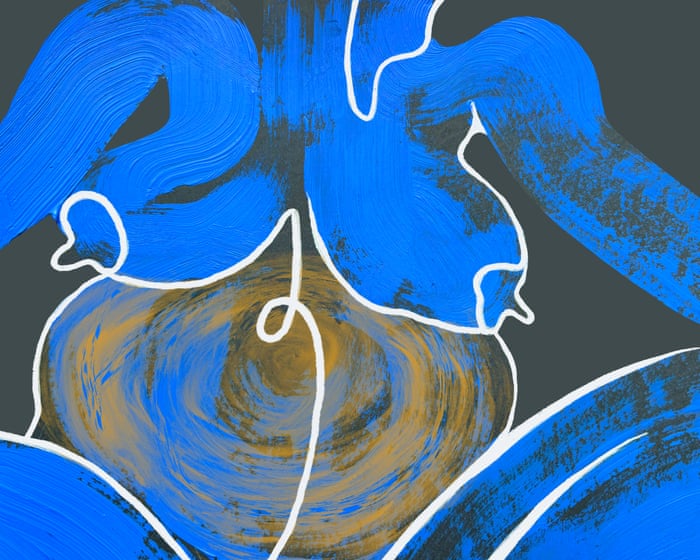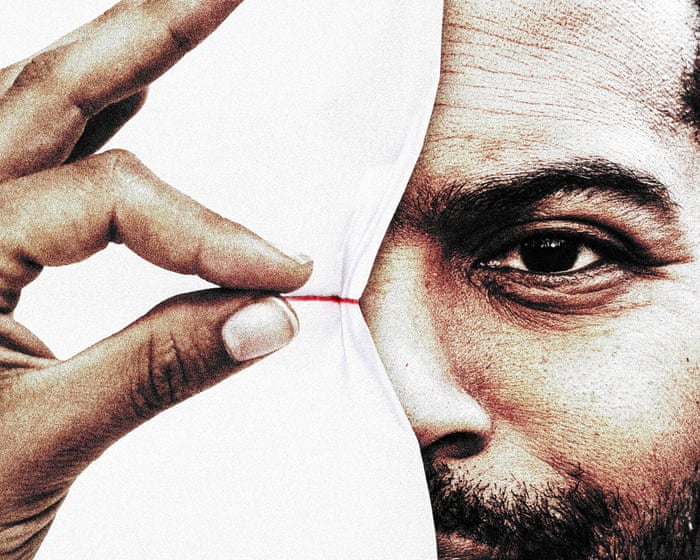The year my body rebelled, I read all 1,296 pages of War and Peace. I didn’t do much else. My body was stuck in an endless cycle, wrung out day and night. Stuck on the sofa, too nauseated to scroll mindlessly, I found an unlikely escape in the bloody Battle of Borodino. Between bouts of vomiting, I’d prop the book on my chest, squint at the small print, and drift into a Tolstoy-induced daze. It crossed my mind that gunpowder smoke and cannon fire weren’t the best environment for a growing baby, but I needed somewhere to go.
At 6 a.m., my husband left for work, and I began another grueling day on the front lines—retching up bile from my empty stomach while keeping pace with the Cossacks on their flanking march. In the grip of severe pregnancy sickness, I found odd comfort in the hardships of 19th-century soldiers—soaked bandages, musket fire, makeshift battlefield amputations. Even, or especially, in the book’s sheer endlessness. For months, as I starved, I carried my starving Russian comrades with me—from the chemical stench of the sofa to the bleach smell of the bathroom to the sweaty reek of the bed. Maybe it was dehydration and hormones warping my mind, but I felt real kinship with my gangrenous friends on the front—far more than with anyone in a “felt cute” sundress on the What to Expect app.
When hyperemesis gravidarum first hit, vomiting 10 to 20 times a day still had some novelty. I was thrilled to be pregnant—just five weeks along, riding the high of discovery—and ready to endure whatever my body demanded. I’m building an entire nervous system, I thought, slumped and sweating on the bathroom floor. But by the time we reached fingernails and toenails, the adrenaline had worn off. What I’d imagined as noble maternal sacrifice gave way to panic. I realized there were still months of relentless nausea ahead.
“Ah, poor pet,” my serene, hands-off midwife would say whenever I described another week of barely eating enough to keep myself and the baby alive. “Nasty stuff. Don’t worry—baby will take what she needs.” Often followed by a breezy, “It’s just you who’ll suffer!” as if that weren’t a problem worth addressing. After one particularly horrific, Exorcist-style night landed me in the hospital, the obstetrician told me to mention that my bump was measuring small. I did, but my midwife bristled at doctors dictating how a pregnant body should behave. “Every bubba grows at its own pace,” she cooed, whisking the measuring tape away.
I asked my mother-in-law if she’d ever been this sick. “Oh no, never like that,” she said, eyeing me skeptically. “Well, once. I made a bacon sandwich and just couldn’t stomach it. I still remember, because I love bacon sandwiches.”
“I was so sick too!” my mother chimed in. “I couldn’t stand perfume counters. First trimester, I could only eat beige food.” I asked how often she vomited, how she coped. “Oh, I never actually threw up,” she said. “But I felt awful.”
Every year, up to 3% of pregnant women worldwide are diagnosed with hyperemesis gravidarum (HG)—not just typical first-trimester nausea, but extreme vomiting that can last the entire pregnancy. In parts of China, rates may reach 11%. Globally, that’s millions of women at any given moment. Add those numbers up, year after year, and you’d think we were facing a major public…The suffering of women with hyperemesis gravidarum (HG) and their babies has largely gone unnoticed. These women face severe dehydration, starvation, isolation, and suicidal thoughts, often with little medical support available.
This changed in 2012 when Kate Middleton was hospitalized in Marylebone due to a pregnancy complication. The palace had to announce her pregnancy earlier than planned when Prince George—still in the womb—triggered a severe form of morning sickness that captured global media attention. I remember reading about it in the Evening Standard on the tube, horrified that such a condition could strike so suddenly. Years later, when I arrived at an Australian hospital at 13 weeks pregnant during the pandemic, nurses were still whispering about Kate’s case.
Like countless other women with HG, I was left to manage mostly on my own, unsure when my symptoms were “bad enough” to justify emergency IV fluids. There were no nutritional checks (I couldn’t keep down prenatal vitamins), no weigh-ins, no counseling, and no specialized care. Most days, I was too weak to move from my spot on the couch. While conventional wisdom claims “the baby takes what it needs,” even from a mother who can’t keep down water, new research suggests the baby may suffer more than we realize—and for longer.
Some might dismiss HG as a modern invention—a sign that today’s women can’t handle what past generations endured. I even wondered this myself. If women had suffered like this for centuries, wouldn’t we—or at least doctors—know more about it? My symptoms vanished after my daughter’s birth, and the ordeal began to fade from memory. But unanswered questions lingered, so I decided to dig into medical archives.
One afternoon, as my now four-year-old sang Patti Smith’s Pissing in a River (“Oh baby, I remember when you were born / It was dawn and the storm settled in my belly”), I searched historical records, expecting little beyond dismissive notes on hysteria. After all, healthcare inequity persists today—why would the early 1900s be better? Yet I was surprised to find serious discussions of HG in 19th and early 20th-century medical journals.
In the British Medical Journal, past reports of syphilitic headaches, gangrene, and tin poisoning from silk stockings, I found a section called Midwifery and Diseases of Women. Here, case after case described pregnant women arriving “in a dying condition”—just as I had often imagined myself.Women suffering from severe pregnancy sickness were subjected to a bewildering array of treatments. There was little consistency in approach, as doctors remained largely baffled by the condition despite extensive theories about its causes. Over a century before the invention of modern sick bags, “pernicious vomiting of pregnancy” was claiming enough lives to cause genuine alarm.
Some doctors, predictably, dismissed it as a nervous disorder. In Berlin, the ominous Professor Kaltenbach discovered that threatening women with a dangerous (and often deadly) surgical termination could sometimes stop their vomiting, leading him to conclude that the condition could be cured through suggestion, much like hysteria. By the 1920s, some physicians, influenced by early psychoanalysis, even claimed the vomiting reflected a subconscious wish to end an unwanted pregnancy. Surprisingly, though, these views were in the minority. Overall, the condition was treated with far more seriousness and care than I experienced over a century later.
As early as 1880—the same year female “hysteria” first appeared in medical literature—a former American Civil War surgeon named William W. Potter took the suffering of his patients seriously. That year, he published a paper titled On Rectal Alimentation and the Induction of Abortion for the Relief of the Obstinate Vomiting of Pregnancy. Potter, who had served as a surgeon and endured Confederate imprisonment, approached the condition with grave concern—a stark contrast to the indifference I encountered in modern hospitals.
Decades before saline drips became standard, doctors were deeply troubled by why otherwise healthy women were vomiting themselves to death. One Glaswegian physician noted: “A really bad case of hyperemesis is one of the most serious and trying things with which a physician has to grapple, and no time should be lost… if the patient’s life is to be saved.”
Notably, the focus was on the mother—unlike today’s post-Roe v. Wade reality in the U.S., where fetal rights often overshadow maternal health. In Victorian medicine, ending a pregnancy—referred to as “emptying the uterus”—was a common treatment for severe cases, offering immediate relief, whether through survival or death.
One particularly grim tool was the “Bossi’s dilator,” a terrifying four-bladed device resembling a butcher’s tool. Designed for rapid dilation, it was so brutal that some doctors, like Dr. Fordyce Barker, refused to use it after witnessing patients die from shock.
Death wasn’t the only “solution,” though. Unlike modern pregnant women avoiding mercury-laden fish, doctors once prescribed mercury as a standard remedy.Severe vomiting during pregnancy was far from left untreated. Women endured a range of extreme remedies, including morphine, laudanum, or even their own urine administered rectally; enemas with soap and disinfectant; doses of adrenaline, arsenic, strychnine, or deadly nightshade; injections of their husband’s blood; hydrogen peroxide suppositories; insulin or ovarian cell injections; and stomach washes or milk injections into the muscles. Some treatments had bizarre regional variations—Edinburgh doctors prescribed a rectal diet of milk, brandy, and meat juice, while a Texas obstetrician boasted of using “heroic doses” of cocaine. When that failed, he tried electric shocks along the spine and stomach. One doctor even used radiotherapy on pregnant women’s lower backs, cautioning against overuse to avoid accidental abortion—though he casually noted it could also be used to terminate a pregnancy if needed.
By the 1950s and 60s, the long lists of experimental treatments dwindled. References to hyperemesis gravidarum (HG) nearly disappeared—until I realized why. The word “thalidomide” never appeared, only its brand name, Distaval. Marketed as a safe, side-effect-free anti-nausea drug in the late 50s and early 60s, thalidomide was prescribed even for mild morning sickness. The resulting birth defects are well-known, but the scandal also eroded trust—women doubted their doctors, doctors hesitated to prescribe, and drug companies avoided pregnancy medications. The principle of “do no harm” was clear, but what about when inaction also caused harm?
Thalidomide was just one piece of the problem. The neglect of HG sufferers reflects a “wicked problem”—complex, with no easy fix. Part of the issue is discomfort—it’s hard to build sympathy around relentless vomiting. When I’ve shared my experiences, reactions are often awkward, the topic quickly dropped with a relieved, “At least that’s over.” The name doesn’t help—”hyperemesis gravidarum” sounds dull, while “extreme morning sickness” downplays the reality.
This isn’t just worse nausea. Morning sickness in movies is a quick, comedic dash to the bathroom. HG means being bedridden, barely eating or drinking for months. There’s no graceful way to interject with the truth—like the night at 24 weeks pregnant when, despite strong anti-nausea drugs, I vomited uncontrollably, wondering if death was near, as unidentifiable chunks filled the bucket and I slipped in my own urine and vomit.I lay there, struggling to breathe between bouts of vomiting. When I started throwing up blood into the clear bags in the ambulance, I cried out, asking if my baby would be okay. The paramedic just chuckled and said, “Nah, that’s nothing. I’ve seen worse!” as if he were some Crocodile Dundee character in a bad comedy sketch.
Unless you’ve lived through it, it’s hard to grasp the physical and mental toll of starvation and constant vomiting—up to 50 times a day for nine months. Research fills in the gaps: bedsores, muscle wasting, torn esophagus, broken ribs, detached retinas, brain bleeds, Wernicke’s encephalopathy, shattered teeth, collapsed lungs, liver damage, lost jobs and relationships, sterilizations to avoid future pregnancies, lifelong PTSD and depression. And sometimes, death.
In 2022, Jessica Cronshaw, a 26-year-old teacher from Lancashire, took her own life at 28 weeks pregnant. Her desperately wanted baby was delivered by C-section but died four days later. The coroner’s report stressed that this case should remind healthcare workers of the devastating mental and physical effects of hyperemesis gravidarum (HG). Studies show nearly 5% of women with HG have terminated wanted pregnancies, and over a quarter have considered suicide as their only escape. The numbers are staggering, year after year.
Last year, when our daughter turned three, my husband rushed into the kitchen waving his phone. On the screen was geneticist Marlena Fejzo, named one of Time’s Women of the Year. She’s become HG’s unofficial champion after identifying a possible genetic cause—the hormone GDF15, also linked to cancer-related wasting. Fejzo, often pictured in her lab coat, discovered that certain genetic variants can make women hypersensitive to this hormone during pregnancy.
She was one of the first to study developmental delays in babies born to HG mothers. “I started looking into outcomes because no one seemed concerned beyond the mother’s suffering,” she told me. Contrary to the myth that “the baby takes what it needs,” HG actually harms pregnancies. Studies show HG mothers are more likely to have underweight babies than those with chronic hypertension, preeclampsia, or even drug exposure. There’s also evidence linking HG to abnormal brain development, autism, childhood cancer, and respiratory disorders.
Fejzo’s work on HG treatment and prevention is what she calls the “final chapter” of her own story. But like many breakthroughs, it came too late for her. She suffered HG in the early 2000s, but her doctor dismissed her symptoms. Even with a Harvard genetics PhD, she wasn’t believed. Her doctor claimed pregnant women “want to be babied by their mothers”—while her retired parents took shifts caring for her, emptying her bedpan.
Now an award-winning scientist, it’s hard to imagine anyone less likely to be gaslit. But back then, she was too weak to fight. She lost her baby in the second trimester to starvation.
“People used to tell me…”People often dismiss pregnancy sickness as “all in your head” because animals don’t experience it. But when I researched this, I found that’s completely false. Veterinary guidelines actually recommend calling a vet immediately if a pregnant cat stops eating for even one or two days – they take feline pregnancy more seriously than human pregnancy!” She jokes that a woman with hyperemesis gravidarum (HG) would have better luck getting a vet appointment, and we laugh together in bitter understanding. But our laughter fades as we remember her devastating loss, the medical dismissals, the gaslighting, the silenced suffering – none of this is actually funny, not even slightly.
Both Fejzo and I entered pregnancy from positions of privilege – educated, financially stable, healthy women in wealthy countries with strong support networks and healthcare access. If women like us struggle to get proper care in this broken system, what happens to those with fewer advantages? Women who can’t advocate for themselves, who face language barriers, or who encounter racial bias in healthcare? What about those starting pregnancy malnourished from poverty, migrants without family support, women who can’t take sick leave, or those in developing nations?
“HG is the fourth leading cause of maternal death in Botswana,” Fejzo tells me, “and that’s just where we happen to have data.”
Current research inspired by Fejzo’s work is exploring treatments that adjust GDF15 hormone levels before and during pregnancy. However, developing safe pregnancy medications takes time, so accessible treatments remain years away.
The issue of medical bias isn’t usually about overt sexism – few doctors deliberately dismiss women’s health. More often, it’s unconscious assumptions that lead to women waiting longer in ERs, being misdiagnosed during heart attacks, or facing delays in cancer detection. Even with growing awareness, these disparities persist.
Women themselves internalize these biases. From childhood, we learn to accept pain as normal – agonizing periods, grueling pregnancies, exhausting motherhood, debilitating menopause. Did my reluctance to “make a fuss” in the ER stem from this conditioning? One wonders if HG research would be better funded if men experienced it.
HG represents extreme, often ignored suffering – torture we’ve normalized because it only affected mothers. But why did we ever think that made it acceptable? There is hope, though – new research has just been published in the same journal (now renamed) where I once found my civil war hero’s treatise.Revised Version:
For rectal feeding. By the end of June, Fejzo and her team published a new study showing that taking an affordable GDF15-boosting drug daily before pregnancy could reduce the risk of hyperemesis gravidarum (HG) by more than 70%. Metformin, primarily used to manage blood sugar in type 2 diabetes, has recently gained attention as a potential “wonder drug” with broader applications. It’s both encouraging and frustrating to think the solution might have been sitting on pharmacy shelves all along. While further research is needed, Fejzo’s work suggests future generations may be spared the suffering endured by so many before them.
As the title suggests, War and Peace isn’t just about battles and injuries—there’s plenty of peace woven into the story. Originally titled All’s Well That Ends Well, the novel’s epilogue is filled with children. The surviving characters are shown in the warmth of family life, cradling babies in little hats with wobbly heads, reflecting on the joy their children bring. Natasha, for instance, finds no comfort greater than her three-month-old at her breast, feeling his tiny movements and the soft rhythm of his breath.
My four miscarriages: Why is pregnancy loss still so misunderstood?
Now, I joke that my pregnancy was so difficult because I was growing someone extraordinary. I’d endure it again in any universe. My daughter knows every word of that Patti Smith song about a stormy birth—I’ve sung it to her since she was born, swapping her name for Kimberly’s, building to the crescendo like a rollercoaster. Now we sing it together—in the car, the living room, the garden—growing louder as we reach the climax: “The palm trees fall into the sea / It doesn’t matter much to me / As long as you’re safe, Kimberly.”
One of my first responsibilities as a mother was to protect my child as she grew inside me. But did I? I’m haunted by the thought that in downplaying my own suffering, I might have overlooked hers too. If I’d known her then—or known about Marlena Fejzo or William W. Potter—I would have marched us to the hospital day after day, demanding the care we deserved.
Listen to our podcasts here and sign up for the Long Read newsletter here.




